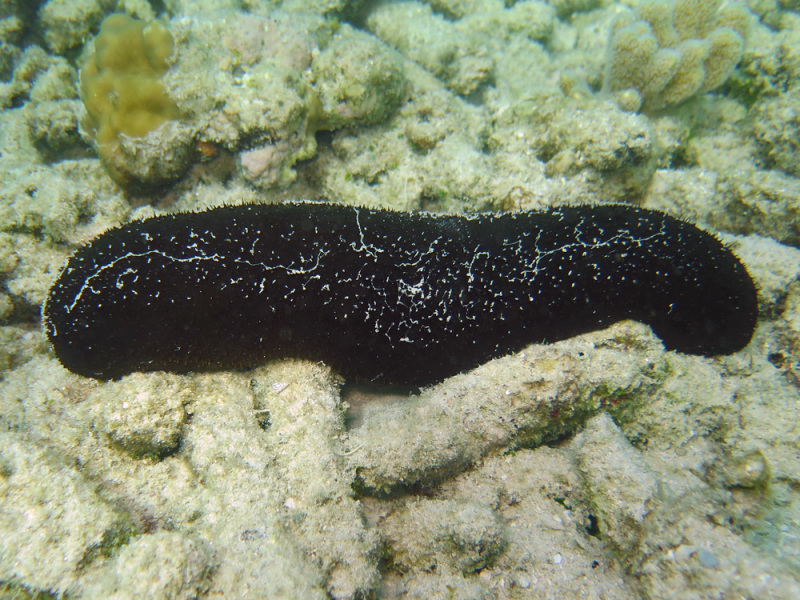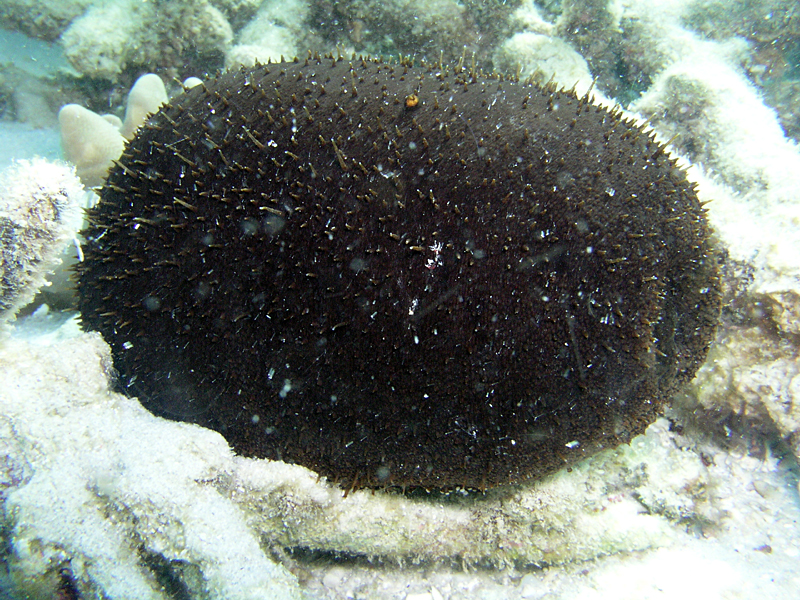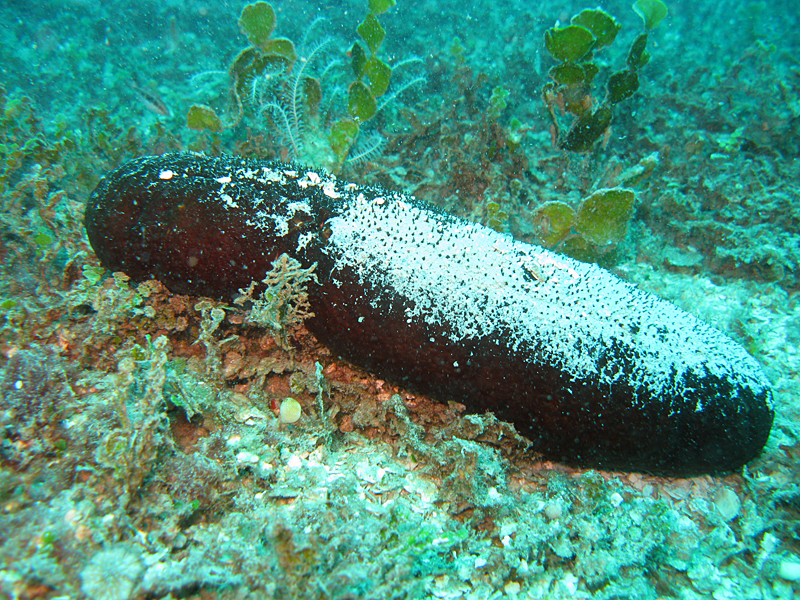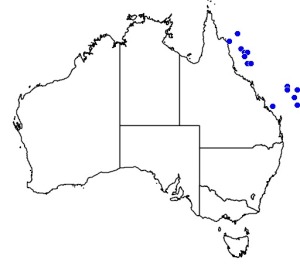�
�

©Anne: Actinopyga miliaris about 30 cm long in its elongate, undisturbed state on the reef flat, Lizard Island.
�
���
Actinopyga miliaris
Blackfish

©Anne: Actinopyga miliaris about 30 cm long in its elongate, undisturbed state on the reef flat, Lizard Island.
Kingdom
Animalia
Phylum
Echinodermata
Class
Holothuroidea
Order
Aspidochirotida
Family
Holothuriidae
Genus
Actinopyga
Species
Actinopyga miliaris
Colours
Distinguishing features
All species of Actinopyga have distinct anal "teeth" that are visible in the field. Colour pattern is useful to distinguish the four species known from Lizard Island. None of the Actinopyga species eject cuverian tubules when disturbed.
Actinopyga miliaris is black all over and is known as the Black Fish in the trepang trade. When disturbed, it becomes shorter and thicker. The body wall is thick, firm and smooth.
Size
- Up to 35 cm (length, Purcell et al 2012)
Depth range
- Up to 12 m (Purcell et al 2012)
Synonyms
Similar taxa
-
Animalia:
Deepwater Blackfish (species: Actinopyga palauensis)
does not contract into a ball when disturbed. -
Animalia:
Burrowing Blackfish (species: Actinopyga spinea)
does not contract into a ball when disturbed.
Distribution
Distribution and habitat preferences
Actinopyga miliaris is found mostly in shallow reef habitats around the Lizard Island group. It has also been found off Pidgin Point in deeper water (>20 metres) on soft bottom associated with algae.
Behaviour
Has been observed spawning at Lizard Island: 4 pm, 18 Oct 2018.
Web resources
References
References that assist with identification
- Purcell, S.W., Y. Samyn and C. Conand (2012). Commercially important sea cucumbers of the world 150 pp., 30 pl. Food and Agriculture Organization of the United Nations, Rome.
Other references
- Cannon, L.R.G. and H. Silver (1986). Sea Cucumbers of Northern Australia Queensland Museum, Brisbane. LIRS catalog number 229.
- Uthicke, S., T.D. O'Hara and M. Byrne (2004). Species composition and molecular phylogeny of the Indo-Pacific teatfish (Echinodermata: Holothurioidea) beche-de-mer fishery, Marine and Freshwater Research, 55: 837-848. LIRS catalog number 1034.









